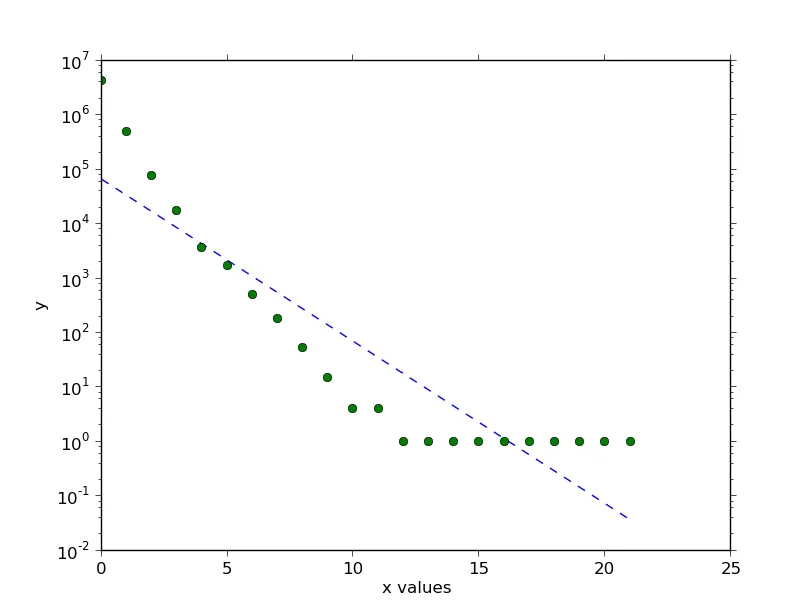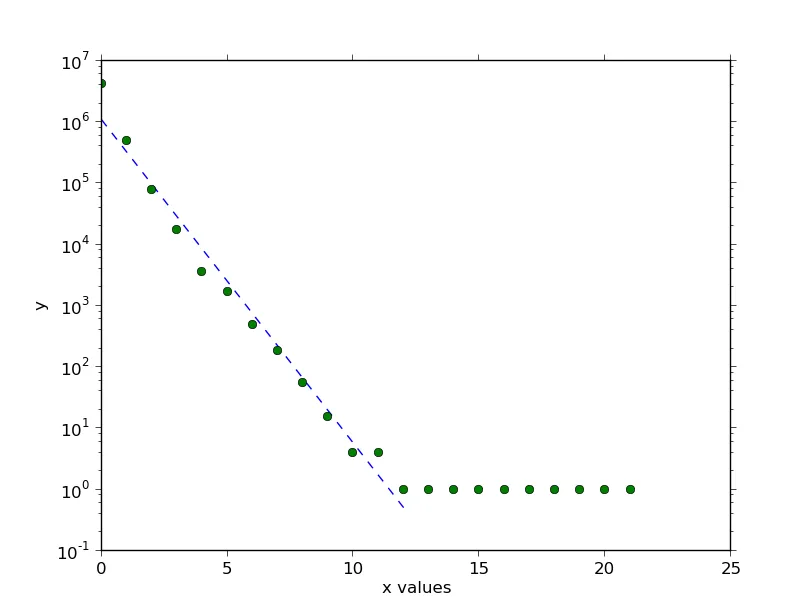你可以尝试去除零(x[0:12]),从(x[0:12],log_y[0:12])生成函数插值,生成相同范围内的更大线性空间,在空间范围内 x 是 12 项,new_x 是 50 项,并使用 f(new_x) 绘制如下图表。该内容与编程有关。
>>> x
[0, 1, 2, 3, 4, 5, 6, 7, 8, 9, 10, 11, 12, 13, 14, 15, 16, 17, 18, 19, 20, 21]
>>> y
[4194304, 497420, 76230, 17220, 3595, 1697, 491, 184, 54, 15, 4, 4, 1, 1, 1, 1, 1, 1, 1, 1, 1, 1]
>>> log_y
[15.249237972318797, 13.117190018630332, 11.24151036498232, 9.753826777981722, 8.187299270155147, 7.436617265234227, 6.19644412779452, 5.214935757608986, 3.9889840465642745, 2.70805020110221, 1.3862943611198906, 1.3862943611198906, 0.0, 0.0, 0.0, 0.0, 0.0, 0.0, 0.0, 0.0, 0.0, 0.0]
>>> f2=interp1d(x[0:12],log_y[0:12],kind='cubic')
>>> x_new_fit=np.linspace(0,x[11],50)
>>> plt.plot(x_new_fit,f2(x_new_fit),'-')
[<matplotlib.lines.Line2D object at 0x3a6e950>]
>>> plt.show()
尝试使用不同类型的插值方法,以实现不同种类的平滑效果。
>>>
>>> f1=interp1d(x[0:12],log_y[0:12],kind='quadratic')>>> plt.plot(x[0:12],log_y[0:12],'-',x_new_fit,f2(x_new_fit),'-',x_new_fit,f1(x_new_fit),'--')
[<matplotlib.lines.Line2D object at 0x3a97dd0>, <matplotlib.lines.Line2D object at 0x3a682d0>, <matplotlib.lines.Line2D object at 0x3a687d0>]
>>> plt.show()
>>>

